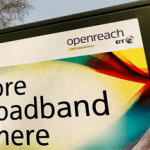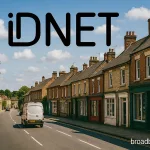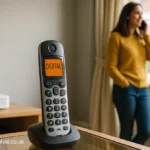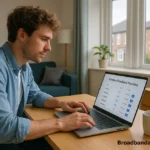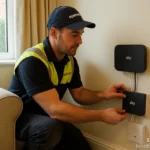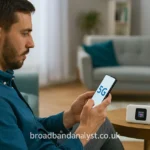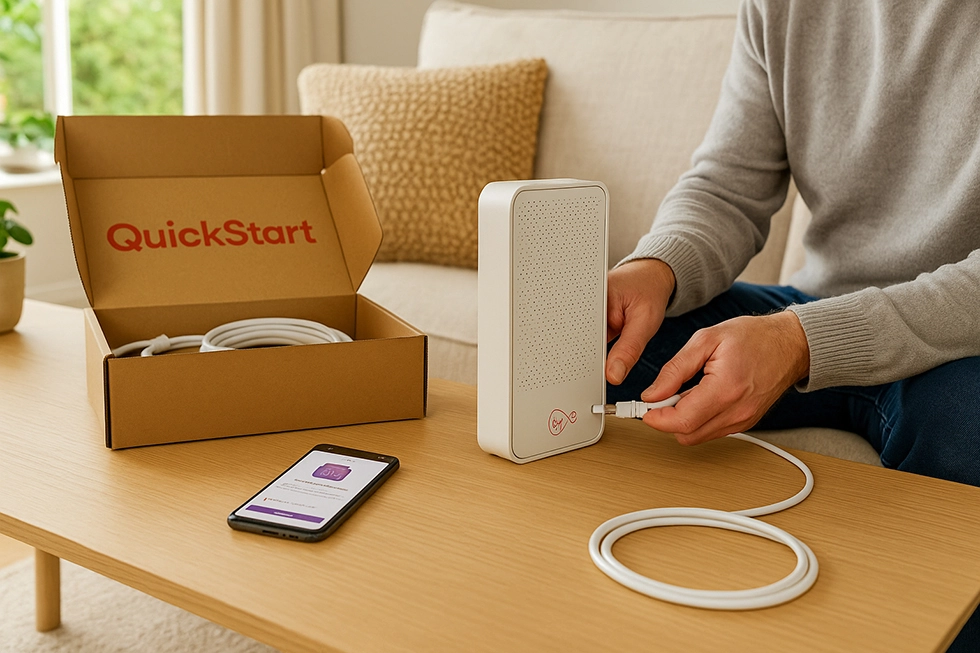Giffgaff, well known for its flexible mobile SIM plans, has started connecting homes to its new full fibre broadband service. This marks its first move into the fixed broadband space, using the same wholesale fibre network that underpins Virgin Media O2’s fastest broadband lines. The trial delivers symmetric 500Mbps speeds and is built on XGS-PON technology.
A New Player in Fibre Broadband
Backed by Telefónica, Giffgaff is now live with its pilot broadband programme, offering services via the nexfibre full fibre network. The company becomes the first consumer broadband provider after Virgin Media to access this platform, giving Giffgaff a direct entry into the competitive UK home broadband market.
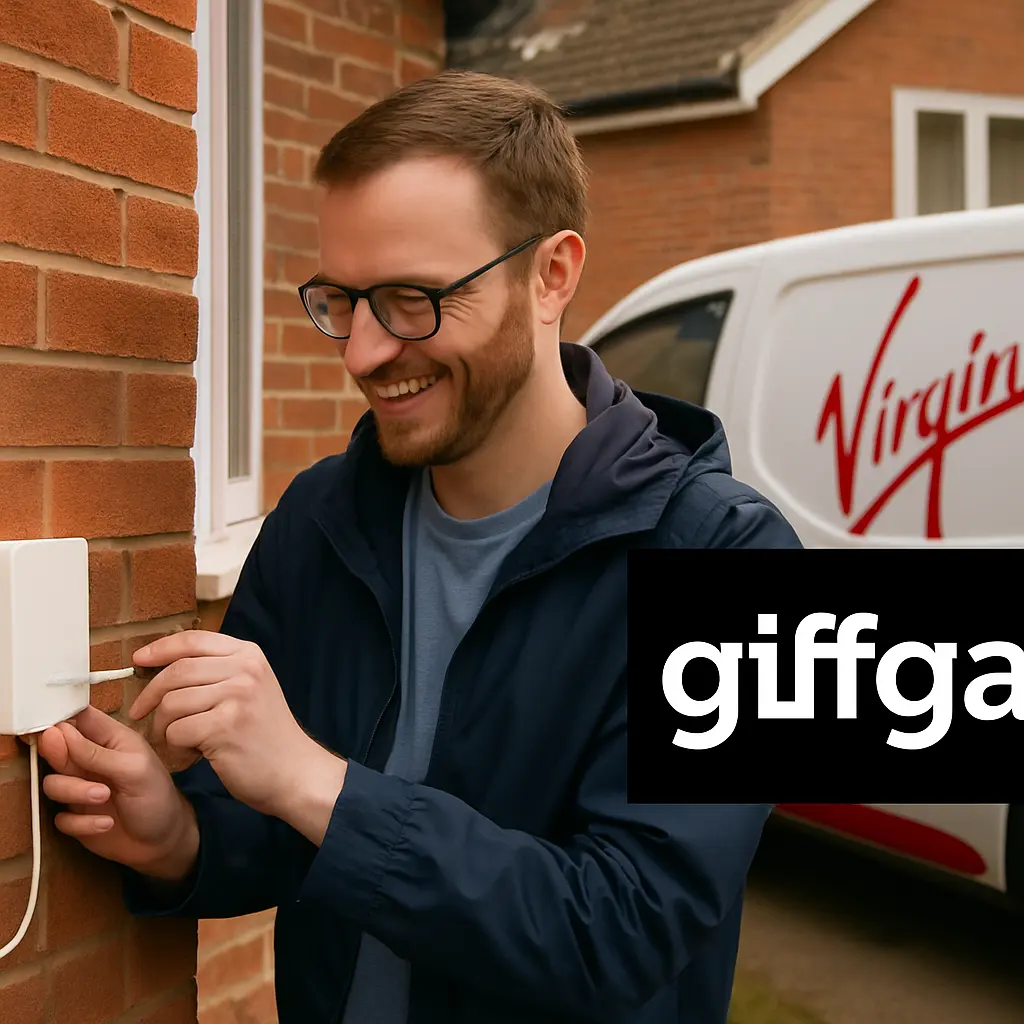
The FTTP network currently covers over 2 million premises across the UK and is set to expand significantly over the coming years. Giffgaff’s entry gives users in connected areas a new low-cost alternative that runs on one of the most advanced fibre infrastructures available.
Trial Details and What Customers Are Getting
The trial phase includes up to 500 users and runs for 12 months. During this period, trial participants get symmetric 500Mbps speeds at just £10 per month. This limited pricing is clearly intended for evaluation purposes only and will change at launch.
Early testers are reporting consistent performance, with speeds sometimes exceeding the 500Mbps benchmark. That’s not unusual for a controlled trial phase, especially on newer fibre lines where network congestion is minimal.
Hardware and Network Setup
Giffgaff is using Arcadyan PB6802B-LG Optical Network Terminals, paired with Amazon Eero 6+ mesh routers. The Eero units are rebranded with Giffgaff’s interface and setup tools, offering simple installation and decent home Wi-Fi coverage.
Connections appear to be assigned proper public IPv4 addresses, not NATed via CGNAT, which is good news for gamers and those running VPN or remote access setups. IPv6 support is not yet included, which is in line with how Virgin Media has handled their broadband stack so far.
Routing and peering seem to mirror Virgin Media’s backhaul approach, which gives a good sense of the latency profile and interconnection paths used for major services like streaming and gaming platforms.
Can You Use Your Own Router?
Some users have asked whether third-party routers will be supported. The trial hasn’t officially confirmed this, but early indications suggest it’s technically possible. The use of an ONT means there’s a clear Ethernet handoff, which allows for custom router setups, provided authentication and VLAN settings are standardised.
This could appeal to more advanced users who want to install custom mesh networks or use business-grade routing for security or port forwarding setups.
Beyond Mobile: Giffgaff’s New Fibre Trial
This trial signals Giffgaff’s first serious push into home broadband. The brand is long associated with low-cost, no-contract mobile service running over the O2 network. With this move, Giffgaff becomes part of a small group of UK providers offering a complete fibre-to-the-premises solution backed by 10Gbps-capable infrastructure.
The launch leverages Telefónica’s ownership in both Giffgaff and Virgin Media O2, along with its joint stake in nexfibre. The integration between these companies helps Giffgaff offer fibre without building its own network, keeping prices low and rollout options flexible.
About Nexfibre and Wholesale Access
Nexfibre is a dedicated wholesale FTTP platform owned by Telefónica, Liberty Global, and InfraVia Capital Partners. It’s targeting five million UK premises in the next few years. While Virgin Media acts as the retail face in many areas, the open access model is beginning to see new providers, starting with Giffgaff.
This will eventually create competition across more regions where previously only Virgin Media fibre was available. It could also pressure legacy FTTC providers to accelerate full fibre upgrades or lower pricing.
Early Performance and Expectations
Initial feedback from trial users suggests better-than-promised speeds, stable connections, and acceptable latency. The symmetric design of XGS-PON means upload speeds are just as fast as download, which benefits video conferencing, cloud backups, and remote working.
The £10 trial price is a clear promotional figure and won’t reflect final pricing. Giffgaff is expected to introduce multiple packages once the full launch begins, possibly with speed options of 150Mbps, 500Mbps, and 1Gbps or higher, depending on area and demand.
There’s no confirmed launch date, but with hardware, provisioning, and network integration already functional, a commercial rollout in late 2025 or early 2026 is possible.
Impact on the UK Broadband Market
Giffgaff’s fibre entry comes as other mobile-first brands like Smarty and iD Mobile also explore broadband. What sets Giffgaff apart is its wholesale access to a pure fibre platform capable of gigabit-plus speeds, and direct ties to one of the UK’s largest infrastructure owners.
For users in Virgin Media or nexfibre-covered areas, this could mean a more affordable full fibre service with flexible terms, and the option to break away from traditional long-term contracts.
The Bottom Line
Giffgaff’s broadband trial may be small for now, but it’s a clear step toward more retail competition in areas where wholesale fibre access was previously limited. If the trial scales well, Giffgaff could position itself as a budget-friendly gigabit provider across millions of homes.
With a proven platform, strong brand recognition in the mobile sector, and support from Telefónica’s infrastructure investments, Giffgaff is well placed to disrupt the lower end of the fibre broadband market. Whether it will expand to cover a wide range of plans and bundle services remains to be seen, but the signs are promising.
